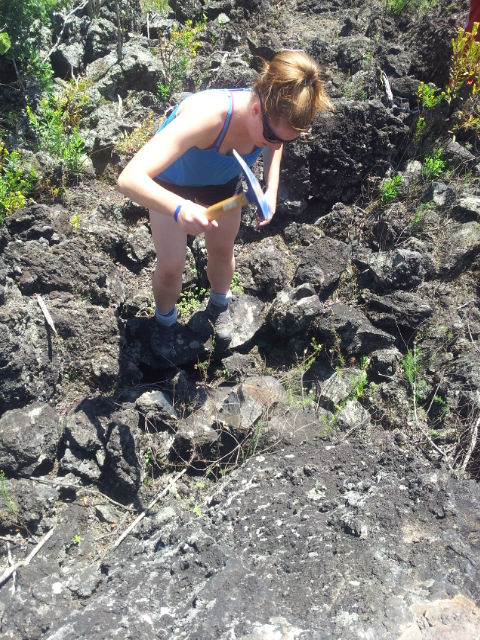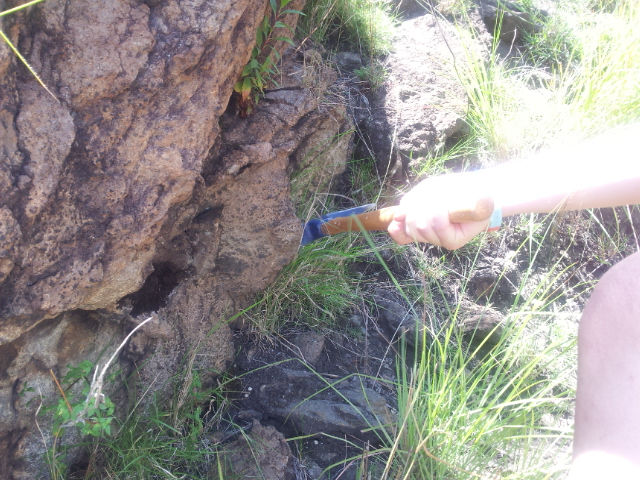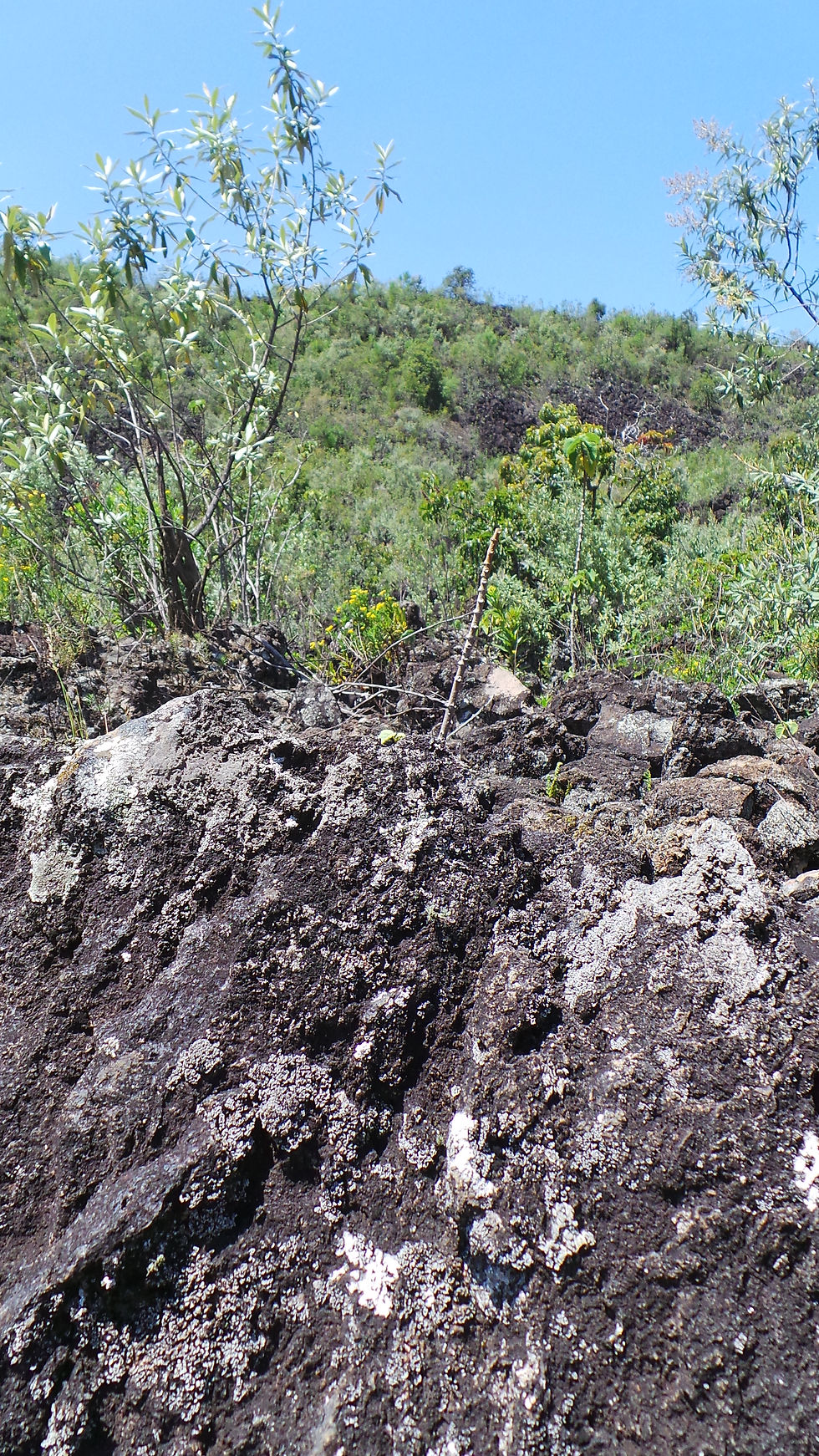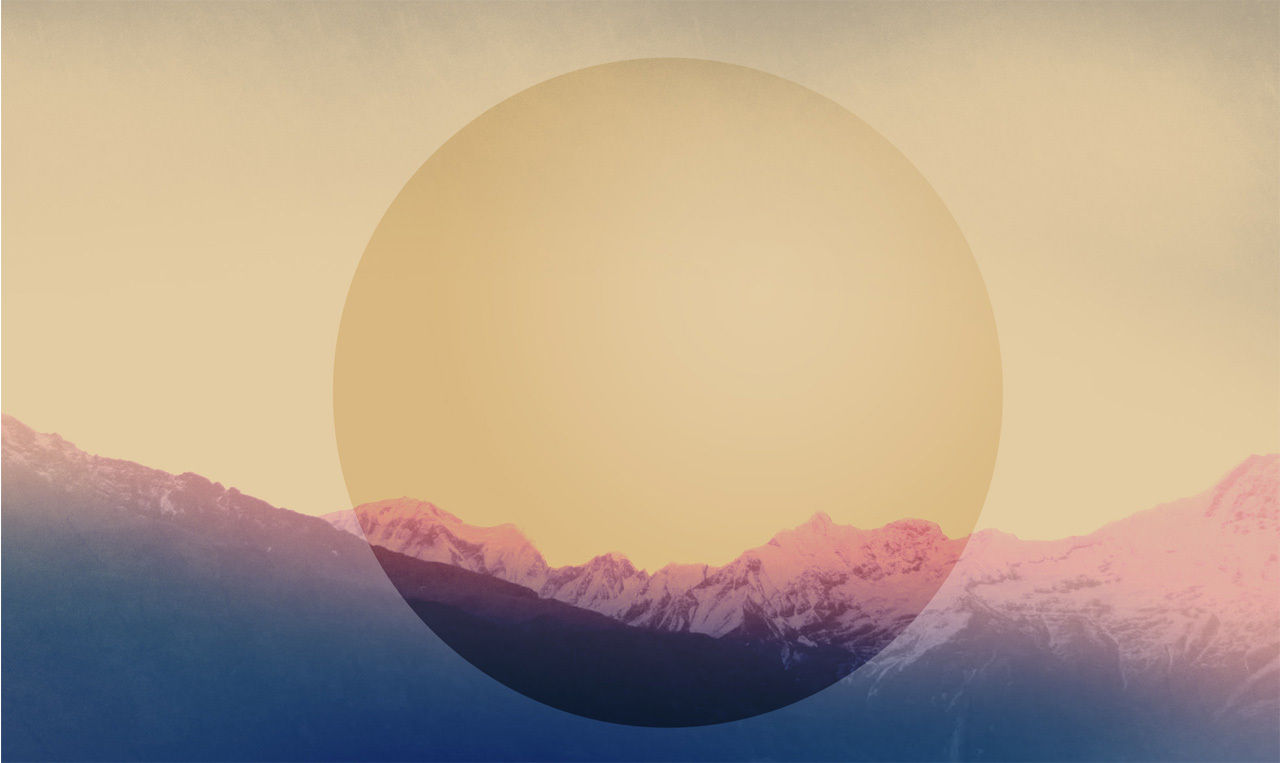Day 6 - Sampling in the caldera
- jennynewall
- Sep 10, 2014
- 5 min read
Today’s objective was to collect some samples of the lava flows in the caldera.

Hammering away at the lava to get a sample.
Before going into the field to sample you must first decide on where the best locations to sample are. We did this by reading some of the work already done here, and what conclusions had been drawn from it. This allowed us to know where lava flows are located, and also the ages of some of the flows - a nice basis to start from. We also studied a landsat image to see what the satellite imagery depicts. The different shading on the landsat image represents different rock types -in this case the different lava’s. We then looked at the site map (which shows us where all the roads are) to see which of the areas of interest we can actually get to. Combining all this information allows us to produce a targeted plan for sampling.
For the first time in a while we actually got into the field early with nothing to hold things up. We arrived at our first location, where from studying the landsat image we know there to be two, possibly 3 different lava flows.Our first task was to identify the different flows, only then could we collect our samples. From where we parked up you could certainly see two different flows, as such identifying and distinguishing between the different flows was very straightforward.


The lava flows as seen from the road. Two flows can be picked out from a distance (highlighted in the bottom image)
There was a dark, blocky flow with a top surface about 5-10m above the road (red line), this was the trachyte we have seen already. Cutting over this almost perpendicularly (blue line - granted the image doesn't really show how this later flow cuts over the earlier one perpendicularly) was a larger flow with its top surface about 20-30m above the road. Even from a distance this flow looked distinctly different from the other one. It was less blocky, and seemed smoother with a very weathered appearance in parts. When we got up close to it we quickly identified it as phonolite (a type of lava flow based on composition), we knew this from its slabby appearance and tendency to break along a plane.
We collected samples from both these lava flows.The first thing you need to do when collecting samples is select the best place to sample from. This depends first and foremost on what analysis you plan to do with the samples. Rock samples can be processed and analysed in numerous ways, depending on the information you want to get from them; for example you can get an age of crystallisation by looking at various isotope ratios, you can determine the age of exposure with cosmogenic nuclide dating (see Barra blog – coming soon), many things can be studied looking at the sample with the SEM (scanning electron microscope). The list of what can be analysed, and how is very long. Importantly, each method of analysis has different specifications required from the initial samples collected (mineralogy, size of sample etc.) due to being processed differently. Helen will be looking at fluid inclusions within the plagioclase crystals, to hopefully determine the depth of the magma source feeding the lava flow. To do this we need to collect samples which contain a decent amount of unaltered plagioclase. So, in the field we were looking to find the least weathered sections of the lava flow - which was difficult in some cases.

Hammering away at a very weathered lava in the hopes that a fresh surface of it won't be so weathered or altered. Once we found a section that looked good we hammered at it to get a fresh surface and studied it with the hand lens to be sure there was sufficient plagioclase in the samples. If the fresh surface is good then we take some samples from it.It can be quite a challenge sometimes to get the ideal sample from the rock.
Lots of hammering and chiselling, and a refusal to give up usually works…. Getting the samples from the lavas at this location was a pretty easy job. However, getting to a good section to sample required fighting through some relatively dense vegetation and walking through some long grass. I’m not usually too worried by this. But Vincent, our wonderful driver, came out with us today and he was very uneasy about going through the vegetation and then climbing up over the rocks; he was worried we would come across a puff adder, or rock python. His fear definitely rubbed off on me and I was very much on edge, jumping at the slightest thing. To add to this in an attempt to get a good tan here I had decided to wear shorts today…a decision I was beginning to regret walking through the long grass! Once we had the samples from the two lava flows we tried to find the possible third lava flow. We knew that to do this we needed to climb up on top of the phonolite flow. This was a steep climb on mostly loose ground – something Helen isn’t most comfortable with. Added to this was the unease we all felt due to it being prime snake territory - it certainly made for an interesting climb. One that was not rewarded in the slightest as on reaching the top it became clear that the vegetation was just too thick to fight through, and it was hiding the view we had climbed up for!

The dense vegetation we encountered at the top of our wee climb. Frustratingly it was covering everything we had climbed up to see!
After a deserved lunch break we moved onto our second location of today. This was chosen due to being a completely different flow to anything we have already sampled. Access to this lava flow was much easier and slightly less nerve-wracking. I think in part due to the fact we were a bit tired of worrying at this point. We still took all the precautions and made every effort to scare off any snakes that were about! It worked – we didn’t see any snakes today. Although it was easier to get to, finding a good sample was incredibly difficult as the lava was so weathered. It was also very altered in places. We got the best sample we could take and called it a day. One thing I have learnt from all the fieldwork I have done this summer is that seemingly every task takes longer to complete than you expect and plan for. This is something I will consider and incorporate into the planning of future fieldwork as it is very frustrating when you don’t complete all the work planned for a day. As such I think it is beneficial to all involved to build less into each day when putting together an itinerary for fieldwork, and of course keep any itinerary very flexible. Hakuna Matata
...in our case there will be no worries as long as we continue to avoid the snakes!


Comments